Don’t Let a Dry Throat or Cough Get in Your Way

Most of us hate it when we have the unbearable symptoms of a dry throat or cough coming. We dislike the uncomfortable feeling of soreness that comes with these illnesses. That is why we try to come up with different ways, such as natural remedies (insert blog link here), to break up a cold.
What does it mean to have a dry throat or cough? 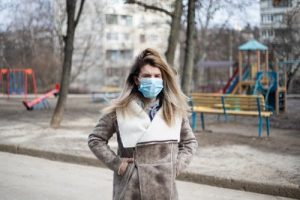
A dry throat is a common symptom during the winter because the air is dry, and upper respiratory infections are usually spreading. On the other hand, a dry cough is a type of cough called non-productive. These coughs don’t have any phlegm or mucus because it is often caused by irritation in the throat.
Common Causes and Treatments
For a dry throat:
-
Allergies – According to Medical News Today, one of the causes of a dry throat is allergies because 30 to 40% of the world’s population have allergies in substances like mold, pollen, pet hair, and certain foods.
How to Treat It: To avoid triggering your allergies, you can stay indoors with the windows closed and the air conditioning on. You can also wash your sheets weekly in hot water and clean up mold in your house. If it is still triggered, you can take antihistamines or allergy shots.
-
Dehydration – The dryness that you’re feeling in your throat might be because you haven’t had enough water to drink, as stated by Healthline. Because you are dehydrated, there isn’t much saliva, which is responsible for moistening your mouth and throat.
How to Treat It: Drink a lot of water and extra fluids as much as you can. It is recommended that for most people, you should drink an average of 15.5 cups per day while for women, it’s 11.5 cups. Make sure to avoid soda and caffeinated drinks because it can cause the body to lose more water.
-
Common Cold – Alongside a runny nose, you can also get a dry throat with a cold. Based on the Centers for Disease Control and Prevention, on average, an adult will get at least 2 or 3 colds annually. This is because of infections caused by different viruses.
How to Treat It: There are various ways you can try drinking warm liquids such as soup with herbs and roots or herbal teas. You can use humidifiers to moisten the air in your room, or you can also try to suck on a throat lozenge. 
For a dry cough:
-
Asthma – This is a condition in the lungs where there is inflammation and narrowing of the airways. Coughing is a common symptom of asthma, and it can be productive and non-productive. There’s also what you call cough-variant asthma, which has a dry cough as its main symptom.

How to Treat It: There is currently no cure for this illness, but many treatments are focused on prevention and relieving symptoms. Most doctors prescribe inhalers or long-term medications. Again you could try lozenges, drinking lots of water, and using humidifiers.
-
Gastroesophageal reflux disease – This is also known as GERD. This is a chronic acid reflux that often triggers the cough reflex.
How to Treat It: The symptoms can be managed by making lifestyle changes like avoiding fatty or spicy foods that can worsen the symptoms, eating multiple small meals a day, and also quitting smoking.
-
Viral Infections – One example would be the common cold. You’ll usually have post-cold dry coughs that will last for at least two months. This is because of the irritation in the airways, which are very sensitive due to the viral infection.

How to Treat It: This can be treated with plenty of rest, which means sleeping at least 8 hours a day and drinking plenty of warm liquids to soothe the throat. You can try to add in ginger or lemongrass to soothe. These dry cough treatments will give the airway time to get better.
Take note of all these treatments and the causes of them. You’ll be ready as soon as you feel like you might be getting a dry throat or cough. Don’t make it worse and treat it as early as possible!
3 REASONS WHY it would have paid for you to get a mask a 6 months ago

Wearing masks might be the new normal today, but did you know that you should have had one months ago? Believe it or not, masks are a must-have for most people, especially since we deal with pollution and other harmful substances that can affect our lungs every day. It might not seem like it, but prolonged exposure to these things and unhealthy habits can have severe effects later on in our lives.
For you to understand the importance of masks, here are three reasons why you need one:
-
Cleaner Lungs

The common answer for using masks is so that you can protect your lungs and breathe in clean and filtered air. You can avoid a stuffy nose caused by allergens such as pollen or dust. You can also prevent dry coughs by minimizing the risks of getting a cold during the changing of seasons. Another important factor is that filtered air can also shield you from various substances and conditions that will cause lung damage. These can include the following:
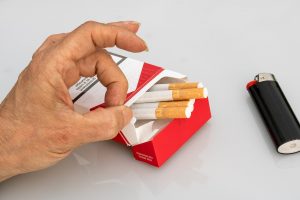
- Smoking – Cigarette smoke produces toxic substances that can cause lung damage because it triggers inflammation and destroys air passages and air sacs, as stated by the Lung Health Institute.
- Household Substances – From VOCs, radon to asbestos and mold, there are several materials that can be found in homes that can lead to lung damage.
- Pollution – It can be indoor or outdoor pollution and consistently breathing in these air pollutants can cause lung inflammation, and in worst cases, lung damage.
-
Comfortability

Who doesn’t want to be comfortable anywhere and at any place? By wearing masks with a high quality filter, you’ll have safety assurance since you would be able to protect your lungs from any toxic and harmful substances or viruses. These days, various masks are used to safeguard people from the spread of the coronavirus and other airborne diseases. Not to mention also that during traffic pollution, you can 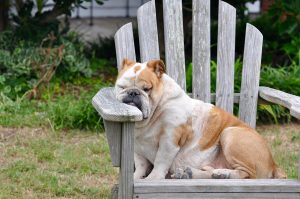 minimize the risks by wearing masks. For those who drive motorbikes, you are more prone to air pollutants caused by traffic congestion. Thus, it is always better to regularly wear your mask as you travel.
minimize the risks by wearing masks. For those who drive motorbikes, you are more prone to air pollutants caused by traffic congestion. Thus, it is always better to regularly wear your mask as you travel.
-
Long-Term Illness Prevention
Air pollution is something that can be hard to escape. Regardless of where you live, it is all around us. According to WHO , “microscopic pollutants in the air can slip past our body’s defenses, penetrating deep into our respiratory and circulatory system, damaging our lungs, heart and brain.” This is why at least 2.5 million people worldwide die each year from the long-term health effects caused by exposure to air pollution, as stated by National Geographic. Because of deadly lung diseases, heart disease, cancer, and other respiratory diseases, air pollution shouldn’t be taken lightly. For these reasons, you can see how crucial it is to wear a mask. This will help reduce exposure to all these pollutants and prevent any prolonged effects.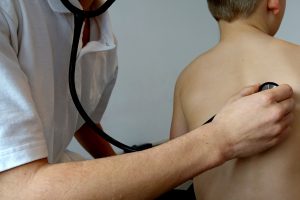
If you consider all these three reasons, masks are definitely something you need for a lifetime. As much as possible, avoid inhaling substances that can cause damage to your health. As they say, it is better to be safe than sorry. 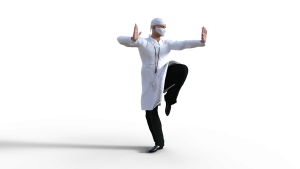
Here are Quick Ways to Break Up a Cold

We all have experienced colds all too well. The changing of the seasons is often not welcomed by many because it brings about unwanted colds or the flu. We start getting scratchy and sore throats, and then we have a hard time breathing because of our stuffy noses.
With each sneeze and blow of the nose, we can’t help but think about how often we take our once decongested nose for granted. Although we do our best to have a healthy immune system by exercising or eating healthy foods, there are just times that a cold finds its way in.
That is why we look for ways to get better quickly. Here are some natural remedies you can do at home to know how to get rid of a cold overnight without medicine.
Remember to Stay Hydrated
Drink a lot of water as much as you can so you can flush out the cold. This will also break down congestion and keep your throat lubricated, as stated by Hello! Herbal teas and other hot liquids are also great with colds and stuffy noses. Teas such as sage, ginger, or chamomile, among others, help ease sore throats and nasal congestion. A helpful tip that you should also know is that you can drink fresh turmeric tea for its anti-inflammatory properties.
Soup for the Soul, Body, and Mind
As most people would say, soup is good for the soul. When we have colds, we often remember eating soup to make us feel better. There is actually a science behind it. Soup with ingredients like garlic, ginger, onions, or lemongrass help to ease the congestion you get when you’re sick. Its broth, helps thin out mucus.
Make Use of Garlic but Don’t Forget Breath Mints

Eating food with garlic might leave you with smelly breath, but it is known for having antiviral, antimicrobial, and antibiotic properties. Thus, it can help with decongestion in colds and the flu. A study was conducted where during the cold season, people who took garlic supplements for 12 weeks had fewer colds than those who didn’t take them. If you don’t like the pungent taste and smell of raw garlic, you can try smearing it on toast with a bit of olive oil or honey or another dish like sautéed vegetables with garlic.
Get Your Beauty Sleep and Feel Rejuvenated
One of the obvious remedies you can do to fight off a cold is to get some much-needed rest. Don’t force yourself to do anything and let your body heal itself. Get adequate sleep because this is the time that your immune system is enhanced. During sleep, your body fights infections, which means the more sleep that you can get, the higher the chance that you’ll cure your cold in no time. It is also understandable that with stuffy sinuses, sleeping might be hard. What you can do is to put extra pillows under your head to help drain the sinuses. Also, make sure that your room climate is humid to further thin the mucus in your nose.
So, try out these natural remedies and see the results for yourself. Of course, if it is not getting better and keeps getting worse, it is better to go right to a doctor for professional help.
The Man with the Healthiest Lungs!

Our lungs play a huge role in keeping us healthy and well, but we do not see the relevance until we experience problems with breathing. That is why, just like the rest of our body, the lungs need daily care and attention.
When we breathe, we feed oxygen to every cell in the body. Because of this, you aren’t prone to health problems such as respiratory illnesses, heart diseases, and chronic obstructive pulmonary disease, among others. For this reason, if you want to have healthy lungs, you need to be more attentive to its overall condition.
Who has healthy lungs?

People who have never had any issues with their breathing, or those who have never inhaled air in polluted places have healthier lungs than those that grow up in polluted areas. The man with the healthiest lungs is probably an ultramarathon runner who spends hours and hours training his lungs while running. By working the muscles that contract and expand the lungs, you can train your lungs to be strong. It isn’t too late for anyone to build healthier lungs. You just need to know the things that you should and shouldn’t do. Here are some of the do’s and don’ts that you can follow:
Do’s:
Diaphragmatic Breathing
If you’re thinking of how to keep lungs healthy naturally, then the breathing technique that you can use is diaphragmatic breathing. This is often used by people who experience lung problems such as asthma and chronic bronchitis.
Diaphragmatic breathing makes use of the diaphragm muscle by concentrating on it as you breathe in. It will result in a much deeper inhale.

You can see this technique also being used by professional singers to increase their lung capacity.
Exercise As Much As You Can
Regular exercise will take you closer to the path of someone having healthier lungs. When you exercise, the heart beats faster, and the lungs work harder—according to research, breathing increases from at least 15 times a minute to 40 to 60 times a minute. This will mean that your lungs will definitely be having a workout and would quickly exchange oxygen for carbon dioxide.
Counting Your Breaths
Another simple way to improve your lung capacity is by increasing the length of your inhalations and exhalations. It can be done by counting how long your natural breath takes. After knowing the count for the average breath, you’ll add one more count to each inhale and exhale. This will conveniently extend the length of time that it’ll take to fill and empty the lungs, resulting in stronger lungs.
Don’ts:
Smoking
It is widely known that smoking is the major cause of lung cancer and COPD. It narrows the air passages and causes swelling in the lungs. As you smoke continuously, the lung tissue would be destroyed over time and may trigger effects that can result in cancer.

So, if you smoke, this is the time to stop now and let your lungs breathe in clean air.
Exposure to Indoor Air Pollutants
Many indoor air pollutants can result in lung
problems. From dust, VOCs, mold, secondhand smoke, and radon, all of these will prevent you from achieving your goals of having healthy lungs. That’s why make sure to have filtered and ventilated rooms for easier breathing.

Exposure to Outdoor Air Pollution
Air pollution is something that we often experience every day. The air quality outside is usually unhealthy to breathe, be it due to traffic congestion or factory buildings spewing up smoke. These things are bad for our lungs. That is why one of the ways to avoid them is by wearing face masks, which can minimize the risks that they bring.
Thus, remember all of these do’s and don’ts, and you will be on the right track to successfully being a man or woman who has the healthiest lungs!

Sources
Do YOU Have These Symptoms of Lung Exhaustion?

If you have recently been exercising and doing other vigorous activities, then you might have had a hard time catching your breath. This is actually not unusual, especially if you are not fit. This is because when we exert ourselves, our muscles require more oxygen than when we are resting. Thus, our breathing rate momentarily quickens, and our heart beats faster to meet that need.

But, if a few breathing exercises are not enough to overcome shallow breathing, it might be due to other serious causes. Your breathlessness might be what doctors would call dyspnea.
What are the symptoms of difficulty in breathing?
According to Roger Maxfield, a professor of medicine at Columbia University Medical, “Even if you feel like you can’t get enough air for a little bit after an activity, that’s okay. But, if you’re short of breath at rest or you’re breathing as hard and deep as you can, and you just don’t get enough air, that’s something that requires professional medical attention.”
Other than the feeling of not taking in enough air, symptoms of dyspnea will include rapid breathing, gasping, anxiety or panic attacks, and increased heart rate.
Underlying Medical Conditions of Breathlessness
- Asthma – Difficulty in breathing happens because airways start to spasm and narrow, which makes it harder to breathe.
- COPD – Because of chronic bronchitis and emphysema, pushing air out of the lungs is challenging.
- Unfit – Inactivity will cause your muscles and heart to be weakened and thus cause breathlessness when exerting energy again.

- Heart Disease – When the heart cannot pump enough blood through the body, little oxygen will reach your tissues and therefore affect your breathing.
Other Non-Medical Conditions Causing Breathlessness
- Low Indoor or Outdoor Air Quality – Air pollutants can irritate the airways and cause other symptoms, which include shortness of breath and even asthma.
- High Altitude – There is less oxygen in the air at altitudes above 4,000 feet, and people who live closer to sea level might feel breathless and light-headed until they become acclimated.
- Extreme Weather – When you are exposed to unusual temperatures like excessive heat, for example, it will force your body to maintain its normal temperature by using extra energy. It will also force your lungs to work harder to breathe.

If you think that you might have some of these symptoms, this might be the time for you to do things like improving your breathing by spending more than 12 hours a day in a filtered area or learning a few breathing exercises. There are a lot of things you can do to make your lungs healthy. So, before it becomes more serious, make sure to stay fit and practice good habits for better lungs.
Resources:
How to Give Your Children Extra Olive oil, Avocado, Broccoli or White Wine – these 3 Delicious Ways
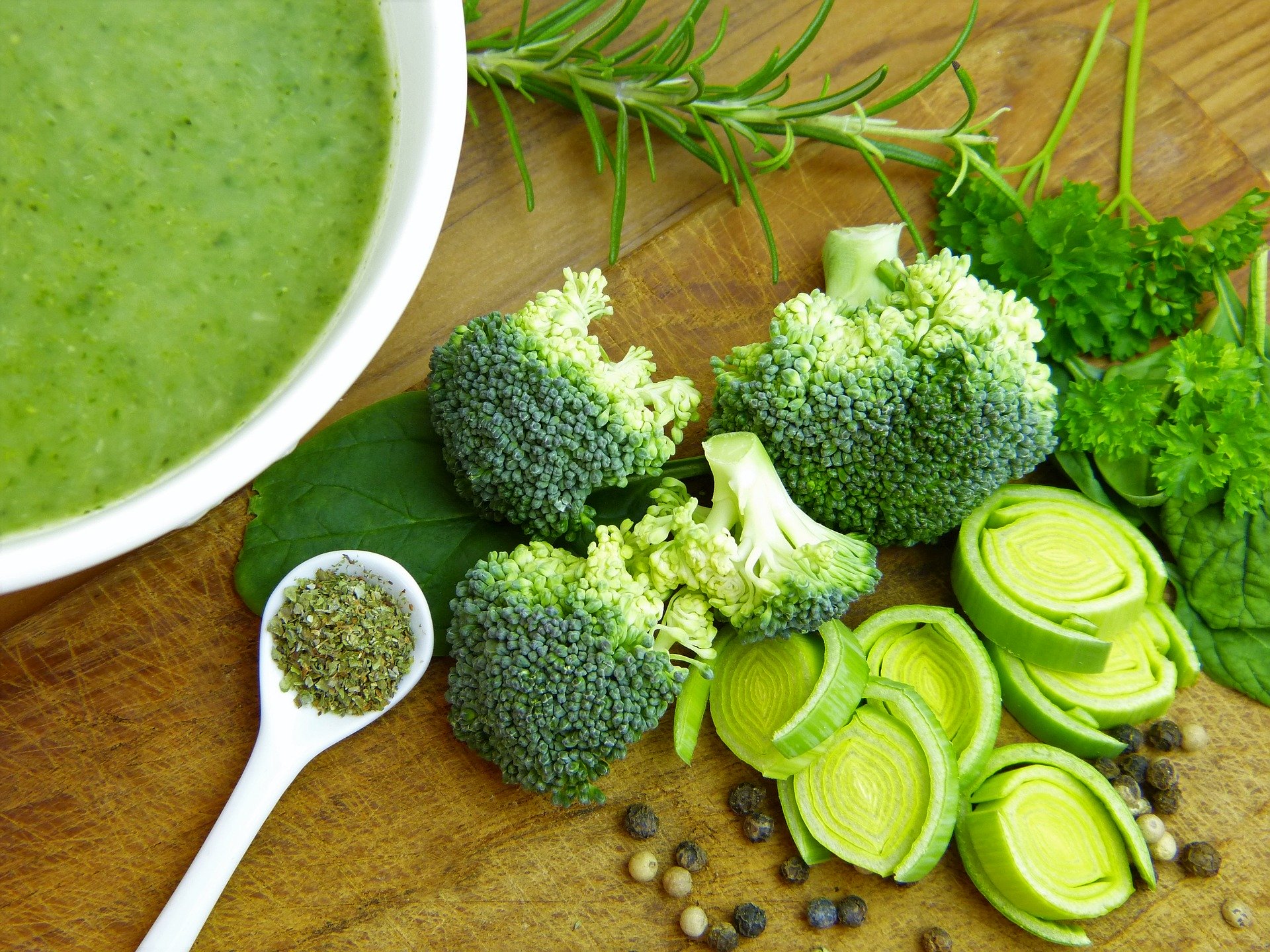
Changing the way food looks might be your only solution when your children don’t want to eat their vegetables. Offering them fresh vegetables is a great way to get them to try the healthy food you want them to eat, but only if it tastes good to them. Having raw broccoli for example, paired with a delicious pesto or scrumptious humous might be a good way to convince them that they are eating delicious food.
We all know how difficult it is to make children eat healthy food. Most of them don’t like the taste of vegetables. However, we do know the various health benefits that healthy food gives them as they grow older. So, what is the easiest way to make them eat these kinds of foods? Well, to make them delicious, of course.
The healthiest meals contain vegetables rich in nutrients. You can prepare food that tastes bland or boring in many different ways with tasty flavors. You can prepare each dish with ingredients such as olive oil, avocado, broccoli, or white wine to enhance the amount of nutrients and vitamins per meal. These are specifically essential if you want your children to have healthy lungs.

Eating healthy food is a great alternative to protecting the lungs. These 5 vegetables contain vitamins, carbs, protein, and fibers that can help boost lung ability and capacity. For example, broccoli contains fiber and important vitamins like A, B, C, and K. Avocado, on the other hand, has vitamin E, potassium, natural antioxidants, and healthy fats. Thus, below are a few dishes that have everything your children will need.
If your child’s favorite food is pasta or potatoes, there are easy ways to add broccoli with basil as a pesto form, or drizzle olive or avocado oil on the dish after it’s cooked. What this does is keep the oil uncooked, which is far healthier than when it has been heated.

3 Healthy Broccoli Avocado Salad Recipes
Here are 3 recipes we have collected to help you out with your meals:
From Simple Nourished Living, this is an easy-to-do salad of lightly cooked broccoli and avocado that is tossed with vinaigrette.
Ingredients:
- 2 tablespoons fresh lemon juice
- 2 teaspoons Dijon mustard
- 2 tablespoons olive oil
- 2 teaspoons Herbs de Provence
- 1 tablespoon chopped Italian parsley
- 1 large avocado, cubed
- 4 cups broccoli, lightly cooked
- Salt and freshly ground black pepper
How to make it?
- Whisk lemon juice, olive oil, mustard, and Herbs de Provence in a large bowl.
- Steam or boil the avocado for under 5 minutes.
- Mix the avocado and broccoli into the whisked mixture. Stir gently and then season with salt and pepper.
- Serve the salad immediately or store it in the refrigerator for up to 24 hours.
Another broccoli and avocado recipe is from Kidspot Kitchen. This is a mix of crunchy broccoli and smooth avocado with a touch of lemon dressing and toasted almond slivers.
Ingredients:
- 500g broccoli florets, cut into small pieces
- 2 avocados
- 3 tbsp extra virgin olive oil
- 3 tbsp lemon juice
- sea salt and freshly ground black pepper
- 1/3 cup slivered almonds
How to make it?
- In a heatproof bowl, place the broccoli in boiling water and then set aside to blanch.
- Dice the avocado and place it in a serving bowl. Drizzle with olive oil and lemon juice. Add a sprinkle of salt and pepper and then toss gently.
- For the almond slivers, toast them in a non-stick frying pan over medium heat. Toss gently.
- Drain the broccoli and add it to the serving bowl. Toss them all with the dressing. Sprinkle the almond slivers and serve.
The last recipe for this list would be the broccoli salad with creamy avocado from Delice Recipes. It is a light and nutritious salad that complements any kind of meal.
Ingredients:
1 broccoli
2 avocado
1/2 red onion
10 cherry tomatoes
1 pinch salt
1 pinch pepper
3 tbsp soy sauce
3 tbsp toasted sesame oil
3 tsp olive oil
How to make it?
- Use a skillet and simmer the broccoli with 3-4 tbsp of soy sauce for at least 4-5 minutes.
- Cut the red onion, ripe avocados, and tomatoes.
- Toss all of the ingredients together and season with a pinch of salt, pepper, olive oil, and toasted sesame oil. Serve immediately.
Resources:
The Crimes We Commit Against Our Lungs

If we want to be able to avoid having unhealthy lungs, then we should do our best to prevent ourselves from doing things that can cause harm to our bodies. Most people are not aware of the implications of what our lungs do. They do not understand the risks and effects that are associated with smoking, not wearing masks, non-ventilated rooms, viruses, and bacteria.

In order to understand what affects our lungs better, take a look at the following list below and see if you are guilty of doing some of these things. You will understand why you should stop doing hurting your lungs now.
Smoking
Smoking is one of the common ways that you can destroy your lungs and lung tissue. The damage happens because it decreases the number of air spaces and blood vessels in your lungs. It will then result in less oxygen in crucial parts of the body. It can cause deadly diseases such as emphysema, pneumonia, and lung cancer. According to statistics, smoking is the reason for 84% of deaths from lung cancer and 83% of deaths from COPD or chronic obstructive pulmonary disease.
Secondhand Smoke

Secondhand smoke happens because of the mixture of smoke from the burning end of the cigarette, and the smoke breathed out by smokers. It contains more than 7,000 chemicals, and hundreds of which are toxic and at least 70 that are cancer-causing agents. on-smokers exposed to secondhand smoke have an increased risk of developing lung cancer by 20% to 30%.
Not Wearing Masks
Based on research, when it comes to exposure to air pollution, even if it’s for a short or long period of time, it can have negative effects on both the lungs and heart. It is estimated that in excess of 3 million deaths happening worldwide each year are caused by outdoor air pollution. So, you might not know it, but indeed, even traffic pollution can harm you if you’re not wearing a face mask. This is because air pollution is made up of particles and gases that include ozone, volatile organic compounds or VOCs, and carbon monoxide, among others. Even dust can be detrimental to your health because it can trigger various allergens.
Breathing in Unfiltered and Unventilated Spaces
Outdoor and Indoor air pollutants are everywhere. That is why you need to have filters and ventilation in place to prevent particles and gasses from affecting your lungs. These pollutants can cause health effects that range from sneezing and coughing to aggravating chronic respiratory disorders and can even lead to fatal illnesses such as lung cancer. Without a filtered or ventilated space, dust mites, smoke particles, formaldehyde, and VOCs can remain in the air and damage your lungs. Poor ventilation can also lead to lingering odors that can have long-term health issues and lower oxygen levels due to the build-up of carbon dioxide.

As we learn more about the air we breathe, and we start to realize how much pollution is really out there, we should consider the effects on our bodies. Especially young people or elderly adults with growing or older lungs have to be careful. In many countries around the world it is difficult to find schools, hospitals, restaurants, bars, supermarkets, and other places we find ourselves in daily, that actually filter the air they provide. Especially in bars and restaurants in developing nations, very high levels of PM2.5 are discovered indoors due to the allowance of smoking. Education and knowledge is a great start, so that’s why we are trying to let everyone know the dangers of pollution. What do you think about the air you breathe for the majority of a day? Is it clean?

Resources:
Where Your Disposable Pollution Mask Ends Up
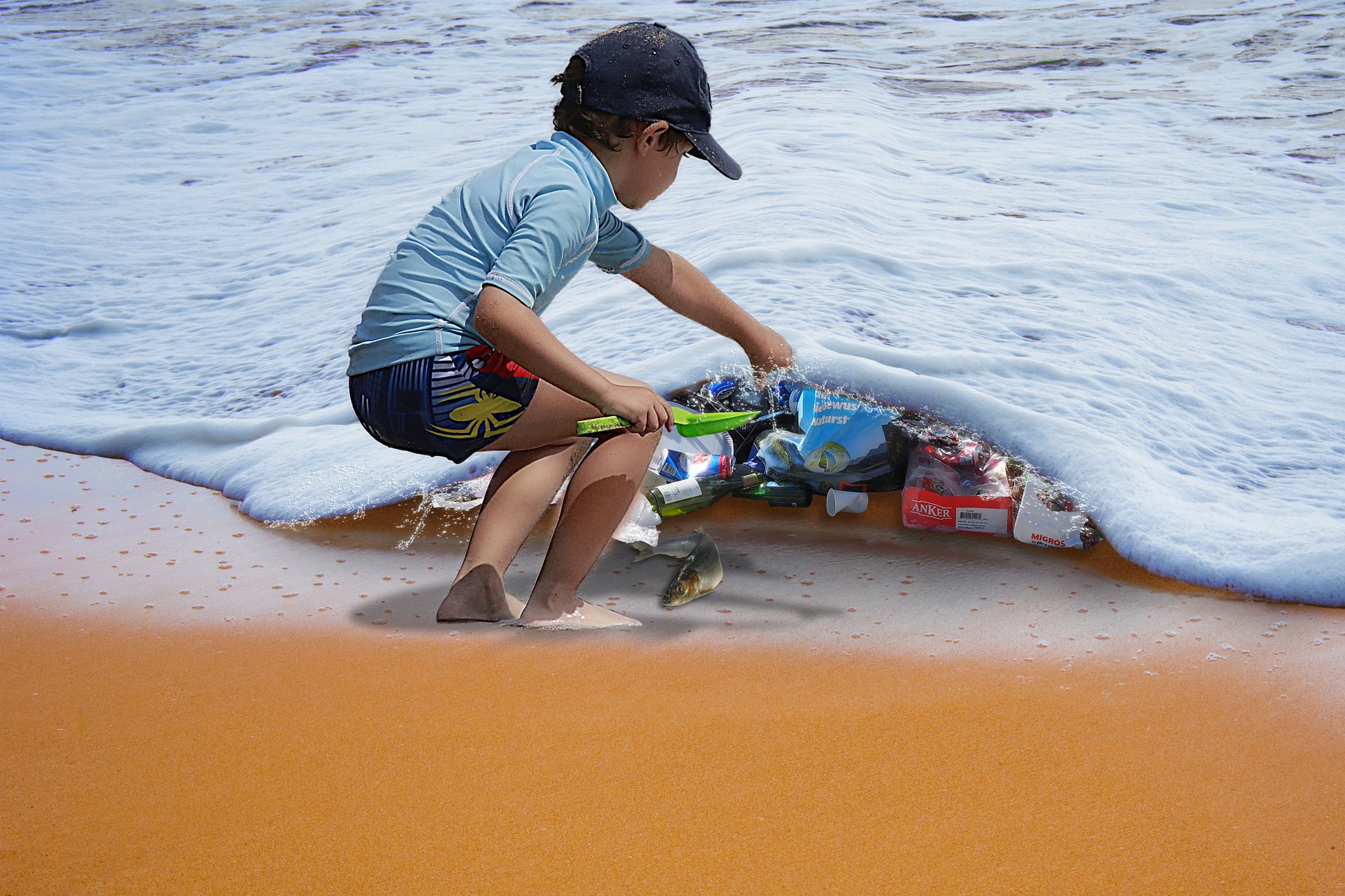
Because of the pandemic, there has been an excessive increase in demand for disposable masks. Many countries have needed them to help lessen the risk of exposure to the virus. Although they have been a requirement for some, disposable masks for that matter are not the best solution for many people. The increased plastic waste that they entail have not been good for the environment.

Doctors and other healthcare professionals are actually the ones that should use disposable masks. They are often exposed to germs, bacteria, and other viruses because of the nature of their jobs. What other people should use are reusable masks.
The Negative Effects on the Environment
Disposable masks like surgical masks are often made mostly of polypropylene. They can either be 20 or 25 grams per square meter in density per mask.

Polypropylene is a thermoplastic polymer usually used in a wide variety of products. This composition of disposable masks makes it a plastic waste that it is hard to dispose of. Not only will they overflow in trash dumps, but some people are not properly disposing of them in the right place. In a recent survey conducted by Environmental group OceansAsia, they have found masses of surgical masks washing up on the shoreline of the Soko Islands in Hong Kong.
According to Teale Phelps Bondaroff, Director of Research at OceansAsia, “Most of these masks contain or are made of polypropylene, which does not break down quickly.
Marine plastic pollution is a serious problem. It is estimated that every year, over eight million tons of plastic enters our oceans. This plastic does not disappear but rather slowly breaks down into micro-plastic, which enters food chains, with a devastating effect.”
This just shows how much of an impact disposable masks are to
the environment. The better solution that most people should turn to is reusable masks.

3 Reasons to Use Reusable Masks
- They last longer than disposable masks. With reusable masks, you can use them for as long as they las, but you must also be vigilant when it comes to cleaning and maintaining them. Reusable masks do have plastic valves, but those plastic valves can be used for eternity. If the silicone stopper in the valves doesn’t work anymore, it can be replaced.

- They can help you save money. You won’t have to buy a lot of masks. You can just have one or two reusable masks, and purchase the replaceable filters which do have to be discarded but do not have any plastic in them. They are better for your wallet and for comfortability.
- They can save the environment. This might be the most important reason. We want to do our best to save Mother Nature. We can do things like recycling or utilizing reusable masks and other reusable objects. We need to stop producing so much plastic waste because the earth and the environment are suffering now more than ever.

Resources:
Do YOU do any of these embarrassing things in traffic?

All of us are human, so we can’t help but commit a few mistakes here and there. But it can be especially mortifying for us when we do things that we’re not proud of in public. Add it to the possibility of doing such things in your vehicle, and it will leave you cringing in your driver’s seat.
For most drivers, some of the most awkward things that they do are usually when they are stuck in traffic during rush hour. With those minutes or maybe even hours of sitting inside your car, there are bound to be some humiliating instances. Here is a list of some embarrassing driving mistakes you might have done in traffic:
Forgetting to Dim Your High Beams
While on the road at night, it might be difficult to see clearly, so you turn on your high beams for a while. But, if you were in traffic and you forgot to dim them, you might be causing annoyance to your fellow drivers. No one wants to get blindsided by such lights, and in worst-case scenarios, you might even cause an accident.
Turning Without the Signal Light On
Drivers find it extremely frustrating when the car in front of them suddenly turns, and their signal light does not indicate such beforehand. You might hear a few honks if you forget to do this essential driving skill.
Stalling
Stalling happens when you let out the clutch too quickly on takeoff. The silencing of the engine can make you feel like crawling into a hole, especially in traffic, and all while you’ve been given the green signal.
Loud Exhaust
If you hear a loud exhaust noise coming from your car, prepare for others to be looking at you. Some people love it when others look at them. There is a thing called noise pollution though, and you might be the culprit with that extra loud exhaust. If you don’t mean it, you might want to cover your face and hide, but maybe it’s also an indication to get your exhaust system checked.
Road Rage
We understand. Traffic can bring out the worst in people. You might have said a few curse words here and there because of unruly drivers. But it is never a shining moment to be shouting incessantly at other people. Humans emotional intelligence quoting the book Emotional Intelligence: Why It Can Matter More Than IQ by Daniel Goleman tells us that it is natural to feel anger for others mistakes on the roads.  You can find this book and many more on Scribd which is a wonderful service that allows you and a few friends to read as many books and audiobooks per month. It’s basically the Netflix of books. If you would like 60 days of free books click here.
You can find this book and many more on Scribd which is a wonderful service that allows you and a few friends to read as many books and audiobooks per month. It’s basically the Netflix of books. If you would like 60 days of free books click here.
Playing Extremely Loud Music
Of course, all of us have our own favorite music, but it can be annoying and embarrassing if you play it too loud that other people can hear it. You should be courteous and respectful since no one wants to be stuck in traffic while listening to songs that they don’t like.

Spit on The Road
Some people have the indecency to spit on the pavement. They lean out of their car window or throw their heads back on a motorcycle. This disgusting behavior leads to people behind them getting spit on them. Nobody knows the bacteria in others’ spit, so it is necessary for people to learn that it is extremely rude behavior.
Cut Others Off
Without using their mirrors, some people just decide to merge or turn. They do this because they are lazy or because they don’t care. Usually it is the larger vehicles that do this most, because first of all they can’t be harmed, and second, they often don’t monitor the surroundings that their vehicle can affect.
Do You Do Any Of These Things?
Can you relate to any of those embarrassing things? Please let us know in the comments if you can! They might be moments that are still stuck in your head and are not easily forgotten. They can also serve as reminders for you to practice proper road etiquette. Please make sure to avoid doing these embarrassing acts as much as possible. They are not just humiliating situations. They can also cause serious accidents if you’re not careful.
Sources:
How often do you hear yourself saying: “I can’t stand pollution in traffic!”
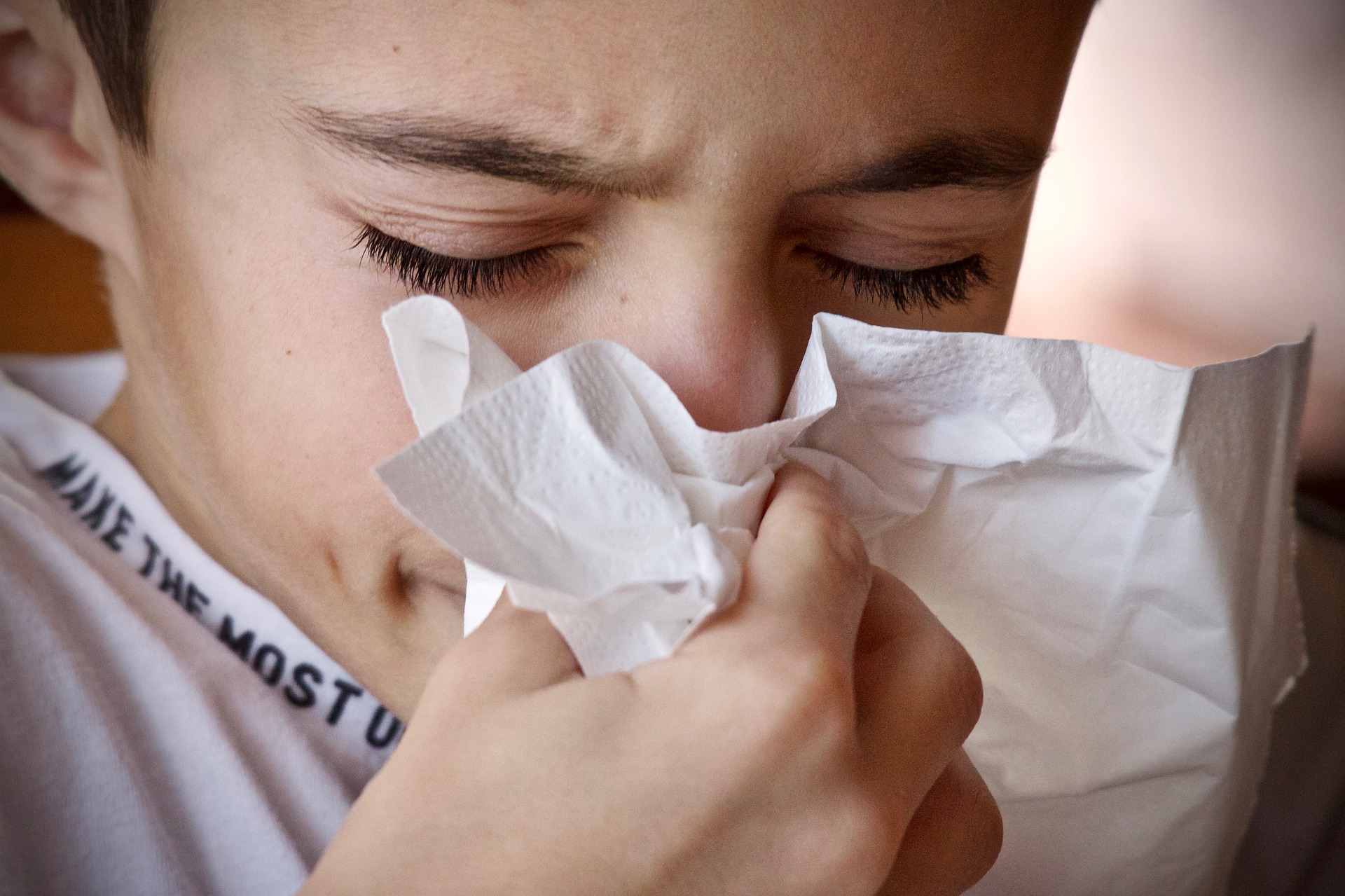
All of us have been there. We have hated and been irritated by the smell of polluted air during traffic. I mean, who can blame us when it can have adverse effects not only on the environment but also on our health. It is stated that road transport is responsible for a significant amount of air pollution in cities and towns. Many industrialized countries have seen the harmful consequences of traffic fumes that pollute the atmosphere. That is why they are looking for various measures to minimize and reduce their risks.
The Risk of Diesel
One of the many examples of air pollutants is diesel exhaust or fumes. Although nowadays, the composition of diesel fuel has become less toxic, studies have shown that inhaling it for long periods can have acute or short term health effects such as: causing stress to the brain.
According to the Director of UCLA’s Center for Occupational and Environmental Health, John Froines, “Diesel has very powerful effects on the lungs.” This statement is also backed by an EPA risk assessment expert, Charlie Ris, who stated that regularly inhaling a concentration of diesel particles, over five micrograms per cubic meter of air, can lead to a “spectrum of respiratory problems.” 
Thus, it can be said that long-term exposure to such kind of air pollution during traffic might lead to awful repercussions that we don’t want to experience.
What Happens?
That putrid smell of gasses surrounding us can quickly remind us how uncomfortable it is to commute around a city. When we get home our noses and throats a
re congested and filled with mucous.
We get a cough and it takes forever for it to go away. On a road trip the dust filled air gets into our cars or around our visors and enters deep into our lungs.
The smell of clean air or freshly cut grass reminds us that there are far better areas to be in than traffic. That’s why we hate being stuck in a traffic jam. The unregulated vehicles spewing out gasses and particles are often the main cause for the pollution in the air and we have to be there. We often don’t have a choice. Rush hour is there because we all want to get to a certain place at a certain time. Sometimes however, we can choose to travel while there is no traffic.
What Can We Do?
One of the best ways to avoid or reduce exposure to traffic air pollutants is to wear a mask.

Most motorbike riders know already of this fact. But a constant reminder is needed because they are the ones who will be most exposed to the pollutants. As also stated in the article, “THOUSANDS NOW WEAR pollution masks who thought they never would,” one should wear masks, especially in traffic-congested cities.
Pollution masks will serve as protection from many pollutants and not just diesel fumes. They can also be a barrier against viruses and bacteria that you might be inadvertently exposed to. They can also serve as a preventive measure since the wearer can use it to avoid spreading illnesses.
Congestion and traffic-related pollution can be really frustrating since they are the biggest contributors to air pollution. Rapid industrialization doesn’t only make it easier for us. However, we should keep in mind that there are simple solutions and ways that we can counteract the negative effects from happening to us.

Pollution masks are prime examples that every little thing will count when it comes to protection from harmful or toxic air quality.
Sources:

